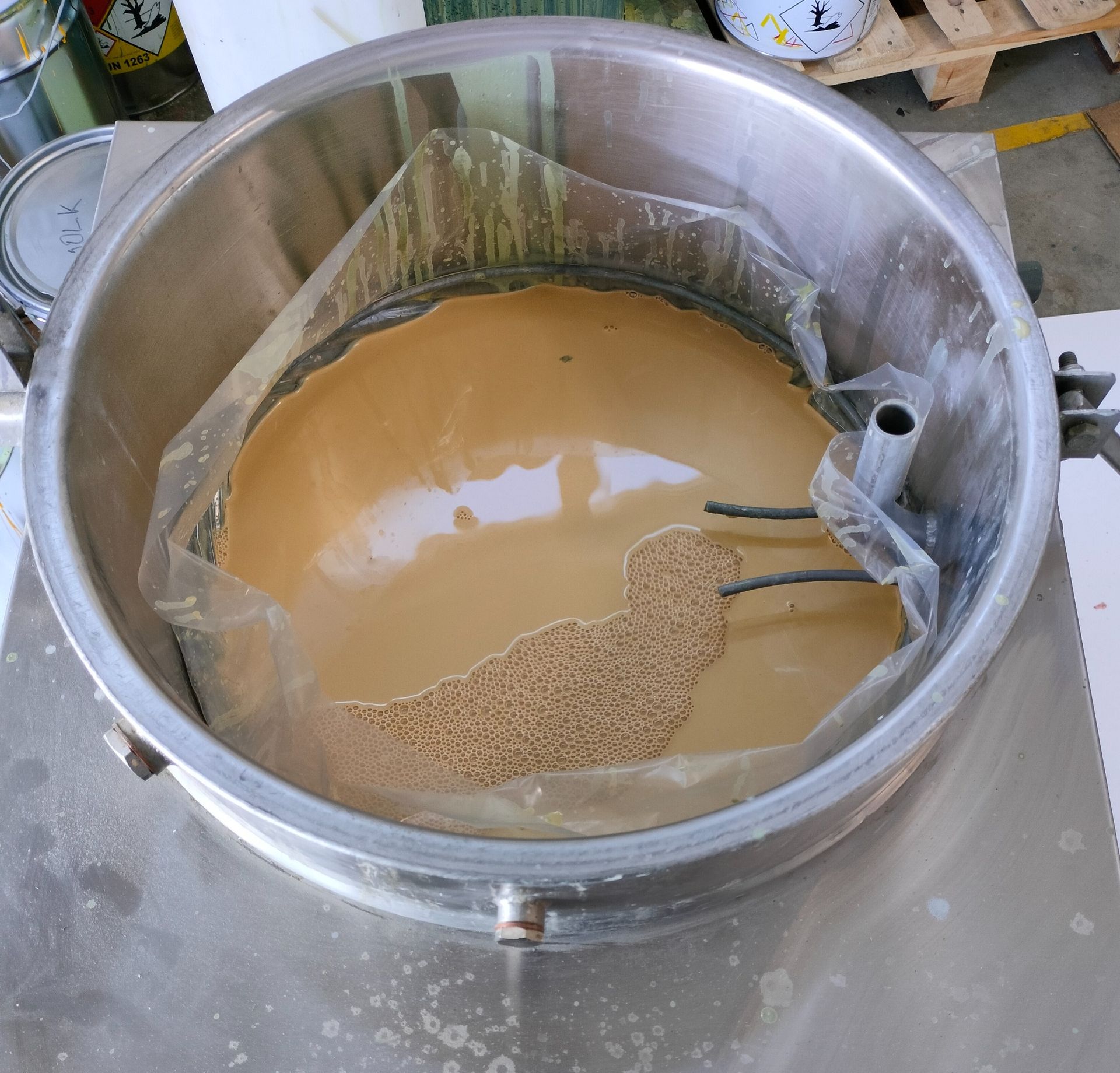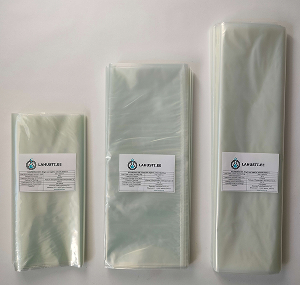Why should you use a single-use bag inside your solvent distiller?
The photo below was taken after a solvent distiller was operated without a liner (bag) inside the tank. The condition shown highlights four key reasons why using a liner is strongly recommended:

1. No need to clean the tank after each cycle.
Cleaning the tank manually is an unpleasant and time-consuming task. For example, cleaning the tank shown in the photo took more than 30 minutes.
2. Reduces exposure to hazardous materials.
Physically cleaning a contaminated tank increases your contact with harmful chemicals, especially since solvents are often required during the cleaning process. In many cases, sharp tools like blades are also needed for scraping off residues.
3. Improves the quality of your recycled solvent.
Residual paint or contaminants inside the tank reduce the efficiency and stability of heat transfer, which negatively impacts the quality of the recovered solvent.
4. Increases system efficiency.
Poor heat transfer forces the distiller to run longer and at higher temperatures, resulting in increased energy consumption.
How loosely or tightly should the bag fit inside the distiller's tank?

Ideally, the recycling bag should fit loosely inside the tank. It is usually acceptable if the bag is slightly larger than the tank. However, if the bag is too long, it might block the opening through which solvent vapor exits the tank. In such cases, you can trim the bag with scissors to shorten it.
If the bag is too small, it won’t fit properly inside the distiller’s tank.
For example, a solvent recovery bag with dimensions 400×550 mm has a circumference of 800 mm, which means that the maximum tank diameter—mathematically—is 254.65 mm. In practice, however, the tank’s diameter should be slightly smaller than this calculated value to ensure a proper fit.
Larger bags typically cost more, so you should aim to choose a size that is as close as possible to your desired dimensions.
What should you know about bag thickness? Should you choose 60 microns or another option?
Thicker liner bags (60 or 65 microns) are more expensive than thinner ones (typically 55 microns).
Using thicker bags is recommended when:
- The solvent residues are particularly dense or solid, or
- You are working with very aggressive solvents.
In these situations, thinner bags may tear when you remove them from the distiller after a cycle is completed.
Why is it sometimes difficult to remove the solvent recycling bag from the distiller?

Ideally, the bag should come out of the tank easily and without tearing, as shown in the photo.
With certain solvents and distillers, the bag may occasionally stick tightly to the walls of the distiller, which can cause it to tear when being removed.
This issue is often due to the bag being too thin. In such cases, we recommend using a thicker bag or double-bagging (placing one bag inside another).
In rare situations, a special surface treatment of the distiller tank may be necessary to prevent the bag from sticking. For example, the tank can be manufactured with a Teflon coating to reduce adhesion. Some users also apply a heat-resistant lubricant to the inside of the tank to minimize sticking.
Removing the bag from the distiller after the distillation process usually takes less than one minute.
Can solvent recycling bags be used more than once?
Solvent recovery bags are designed for single use and should be disposed of after each cycle. After use, residues remain at the bottom of the bag. These residues impair heat transfer during the next distillation cycle, reducing efficiency and making the quality of the recovered solvent unpredictable.
What material are solvent recycling bags made of?

Solvent recycling liners are made from Nylon 6 or Nylon 66 (also known as PA6, PA66, Polyamide 6, and Polyamide 66).
It’s important to note that Nylon 66 (PA66) offers higher heat and chemical resistance compared to Nylon 6 (PA6).
When should bags be placed inside one another during the distillation cycle?
Placing one bag inside another is recommended when a single bag tends to stick strongly to the distiller’s wall or tears when being removed from the tank. In such cases, using two bags can prevent damage and make removal easier. In our experience, a specific type of bag may work well with one combination of distiller and solvent but not with another. If bags frequently tear in your current setup, we recommend testing different options.
What criteria should be used when choosing recycling bags?
Start by ensuring the bag meets your technical requirements (temperature, chemical compatibility, etc.). Next, verify that the dimensions match your distiller. Then test whether the bag can be removed easily after a cycle. If all of these conditions are met, you can base your final decision on cost efficiency.
What actions and tips help prevent the bag from breaking?

- Distill at a lower temperature or for a shorter time, if possible.
- Double-bag by placing one bag inside another.
- Use thicker bags for added durability.
- Remove the bag only after the distiller has cooled down and it is safe to do so — but do not leave the bag inside the distiller for several days, as this may weaken the material.
What other purposes can solvent recycling bags be used for?
Solvent recovery bags can be used for many applications beyond their original purpose. Thanks to their high chemical resistance—not only to solvents but also to many other substances—they are a good choice for storing or disposing of various chemicals safely.










